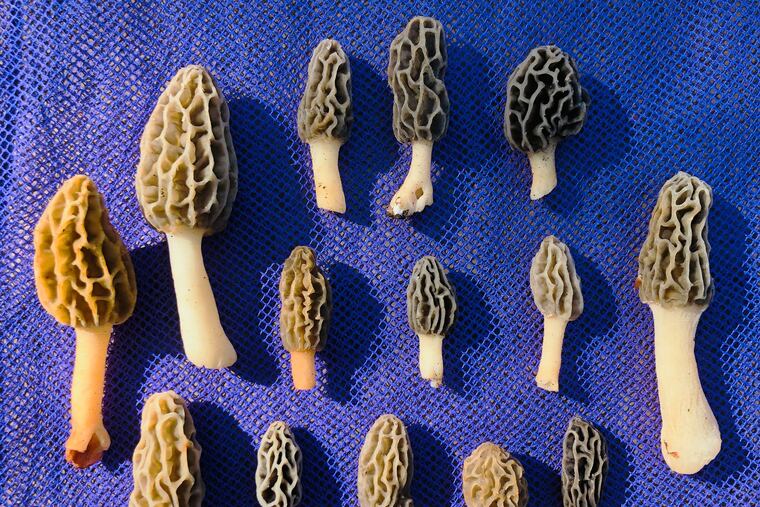CHOP poison control center warns of spike in severe mushroom poisonings, one requiring organ transplant
The center reports 11 cases the past month, 7 of which required hospitalization; 3 patients who were admitted to intensive care; and 1 in need of an organ transplant.

A subculture of foragers is scouring a growing host of social media groups, hashtags, and phone apps to find and identify mushrooms not only to eat but for a psychedelic experience.
And that comes with real risk, warns the regional Poison Control Center at Children’s Hospital of Philadelphia, which handles calls from half of Pennsylvania and all of Delaware.
The center is warning that it has seen 11 poisonings from people eating wild mushrooms in the last 30 days. While the overall number of such cases rises and falls periodically, a recent spate of severe cases has been alarming, said Robb Bassett, associate medical director of the center.
“What really caught our attention was the severity and toxicity of the patients suffering from it,” Bassett said.
The center reports that seven cases required hospitalizations over that period, including three patients who were admitted to intensive care. One needed a liver transplant.
Why are severe cases on the rise?
Bassett cites possible reasons for a sudden spike in severe poisonings:
Social media can lure people to think they can identify wild edible mushrooms on their own. People will cross states to forage and return home to eat the fungi and even serve them to their families.
Some immigrants who successfully foraged in their countries of origin can mistake species that look similar.
It is “not rare” to see people poisoned who were in search of the hallucinatory properties of some mushrooms, Bassett said. Some have been hospitalized for psychotic episodes and organ failure.
A study by a branch of the National Institutes of Health reported in a paper last year that younger people were searching for Amanita muscaria mushrooms, which can be poisonous but can also deliver psychedelic effects. The paper discussed a patient who fell into a coma after accidental Amanita muscaria poisoning.
‘Don’t let your guard down’
Bassett urges people to forgo foraging because poisonous wild mushrooms often look the same as cultivated mushrooms bought at a supermarket. He noted that it is not clear whether a sudden spike in more severe poisonings is widespread because cases the center handles are self-reported and do not represent an objective study.
“There are a lot of mushrooms that are nontoxic,” he added, “but even in the ones that are toxic, the range of symptoms they cause can be really variable, from changes in blood pressure to altered mental states, to seizures, or the most consequential — organ failure and, in the most extreme cases, fatality.”
In previous years, he said, many of the cases seen by the center involved people eating mushrooms not associated with severe illness. Milder symptoms can include gastrointestinal issues such as cramps, vomiting, and diarrhea.
“But in this last month, we’ve had a lot of people who’ve suffered evidence of liver damage,” Bassett continued. “That is unusual for us. So the concern and the real public health message is don’t let your guard down. Picking mushrooms and foraging for mushrooms can be dangerous, and it’s easy to underestimate your ability to distinguish poisonous mushrooms from edible ones.”
He added: “The safest way to make sure your mushrooms are nontoxic is to buy them in a retail store.”
Key facts
The Poison Control Center advises:
Symptoms from eating poisonous mushrooms might not appear for hours to days.
Cooking wild mushrooms does not make them safe to eat.
Differences in soil and climate can make mushrooms that are highly toxic here look very similar to those safe to eat in other parts of the world.
If you decide to eat a wild mushroom, take a picture of it beforehand, including shots of the top and bottom of the cap, stem, and base. Those pictures can help medical staff identify the mushroom if you need medical care.
If you suspect a poisoning, call the Poison Control Center at 1-800-222-1222.